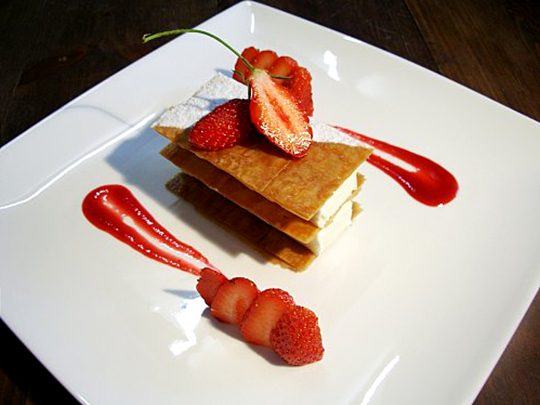Here’s a short post to explain the importance of dish plating rules… It is a pity to spend so much time cooking and not to promote your hard work. Never forget that you “eat with your eyes first”.
Plating a dish requires a few simple rules:
1. Avoid overloading the plates
Your dish won’t be very attractive if meat is swimming and your vegetable garnish sunk in an ocean of sauce.
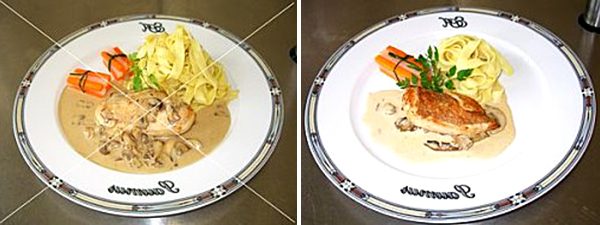
Don’t be afraid of blank spaces on plates as it helps to highlight your composition. Remember that less is more, so if you overload your plate with too large of a portion, you’ll make the food less precious and valuable.
2. Alternate forms and volumes
Try to mix crisp and soft, large and small, and dark and light elements. In some cases you can use the sauce as decoration.
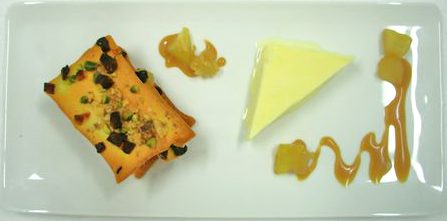
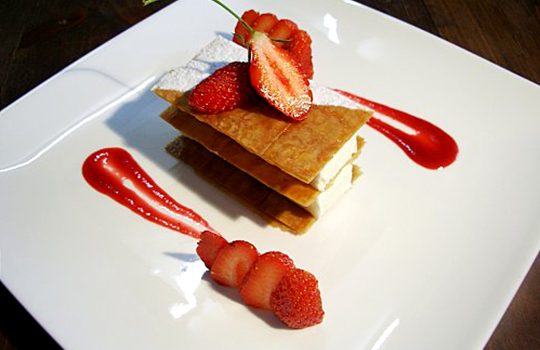
Serve additional sauce on the side or in a small stylish jar.
Slice vegetables and fruits using various and surprising combinations to make great looking garnishes.
3. Think about playing on contrasts and colors
Vary the look of your plate presentation through the color of cooked food or adding colorful decorative elements.
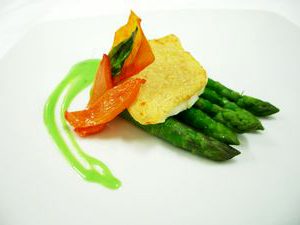
Cherry tomatoes or sundried tomatoes are a good element to add some red. Try a sprig of fresh herb, the most commonly used currently being chervil. The technique of “blanching” will be very useful as it allows you to keep the vivid green of vegetables by boiling them, then putting in iced water. More information about blanching here.
4. Observe a half inch space or more between food and the edge trim
To keep the eyes focused on the food, don’t hesitate to leave a regular blank space between your composition and the edge of the plate.
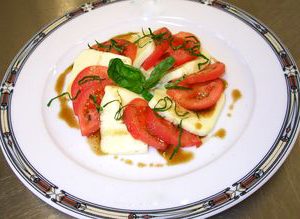
If you have nice decorative plate, it would sad to hide them!
That’s all for this short reminder about food presentation! If you’re interested about this subject, go and check our previous articles about the art of plating a dish and the tools to create professional looking food presentations.
Don’t miss this: 10 Decorating Ideas to Revamp your Kitchen

